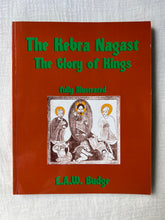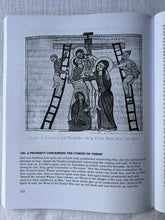
Language: English
The Kebra Nagast, (Ge'ez: ክብረ ነገሥት), or The Glory of the Kings, is a 14th-century national epic from Ethiopia, written in Ge'ez by Nebure Id Ishaq of Axum, by the office of Abuna Abba Giyorgis and at the command of the governor of Enderta Ya'ibika Igzi'. The text, in its existing form, is at least 700 years old and although clearly legendary is considered by many Ethiopian Christians to be a historically reliable work. It is considered to hold the genealogy of the Solomonic dynasty which followed the Ethiopian Orthodox Tewahedo Church.
The text contains an account of how the Queen of Sheba (Queen Makeda of Ethiopia) met King Solomon and about how the Ark of the Covenant came to Ethiopia with their son Menelik I (Menyelek). It also discusses the conversion of Ethiopians from the worship of the Sun, Moon, and stars to that of the "Lord God of Israel".
It has been described as “an Abyssinian politico-religious epic” and "medieval-era mythology". Nadia Nurhussein wrote that "The Kebra Nagast gave textual authority to a then newly articulated mythology of Abyssinia’s long imperial history, legitimizing a “Solomonic” dynasty' that claimed to reach back three thousand years earlier to the union of King Solomon and the supposedly Ethiopian Queen of Sheba." It enabled the overthrow of the Zagwe Dynasty.








